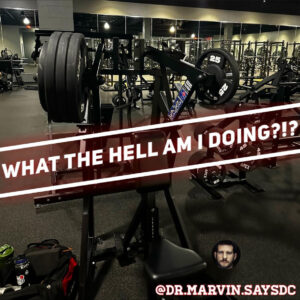by Dr. Marvin DC
So you get an injured and have to take time off of lifting with a particular limb on one side….what do you do with training?
Do you stop going altogether?
Do you only do your legs if your arm is immobilized?
Or, what about not only just doing legs, but your healthy arm as if nothing else had happened?
The science points to the last option being the best answer with something known as the crossover effect.
The crossover effect refers to the phenomenon where strength or muscle gains occur not only in the trained limb but also in the contralateral (opposite) limb. This concept has been explored in the context of rehabilitation, particularly when one limb is injured or immobilized.
KEY FINDINGS/APPLICATIONS:
1. Unilateral Training and Contralateral Strength:
– Research suggests that unilateral (one-sided) resistance training can lead to strength improvements not only in the trained limb but also in the contralateral limb.
– This effect is thought to be mediated by neural adaptations, such as increased motor unit recruitment and neural drive.
2. Maintaining Strength during Immobilization:
– When one limb is immobilized due to injury or surgery, incorporating heavy resistance training on the opposite limb can help maintain strength and muscle mass in the immobilized limb.
– Studies indicate that neural adaptations play a crucial role in preserving strength in the inactive limb.

3. Cross-Education Effects:
– Cross-education refers to the transfer of training-induced strength gains from one limb to the opposite limb.
– Research has demonstrated cross-education effects in various populations, including healthy individuals and those undergoing rehabilitation.
4. Preservation of Muscle Size:
– Some studies suggest that the crossover effect extends beyond strength to include the preservation of muscle size (hypertrophy) in the contralateral limb during periods of unilateral immobilization.
5. Neurological Adaptations:
– Neural adaptations, such as increased corticospinal excitability and changes in motor cortex representation, contribute to the crossover effect.
– These adaptations facilitate improved motor performance and muscle strength in the untrained limb.
The crossover effect of heavy training opposite an injured limb has been observed in various studies, showcasing the potential for preserving strength and muscle mass during rehabilitation. Integrating unilateral resistance training into rehabilitation protocols may offer a practical and effective approach for optimizing outcomes in individuals recovering from limb injuries or surgeries.
Always consult with healthcare professionals on whether or not you are a good candidate for using this method (such as us here or another rehab focused chiropractor, physical therapist, etc).






